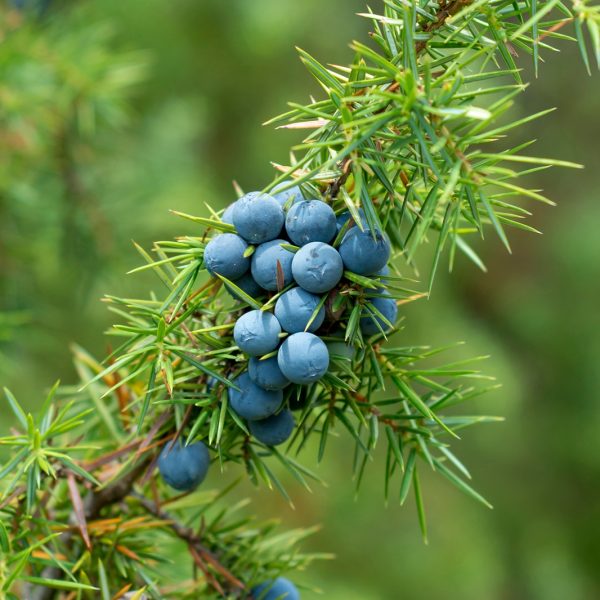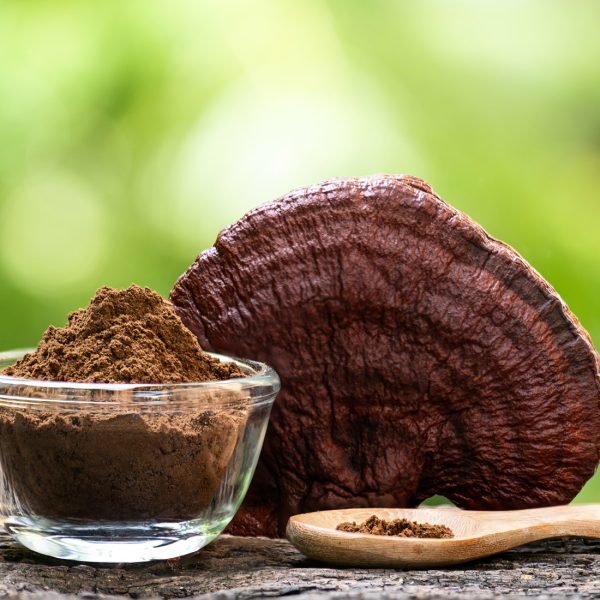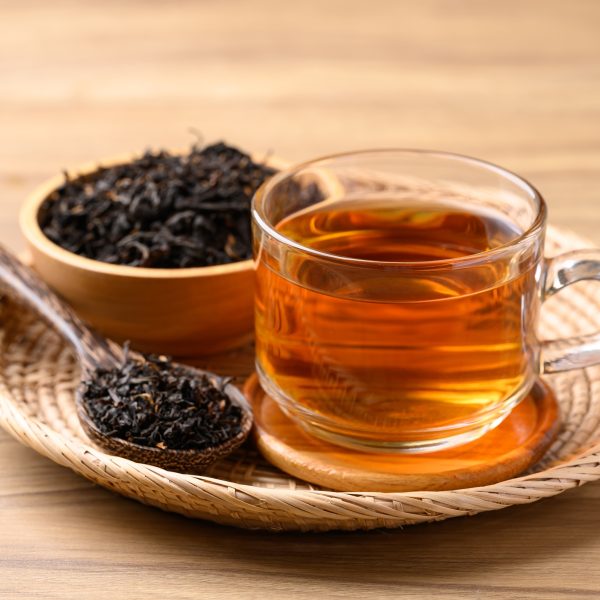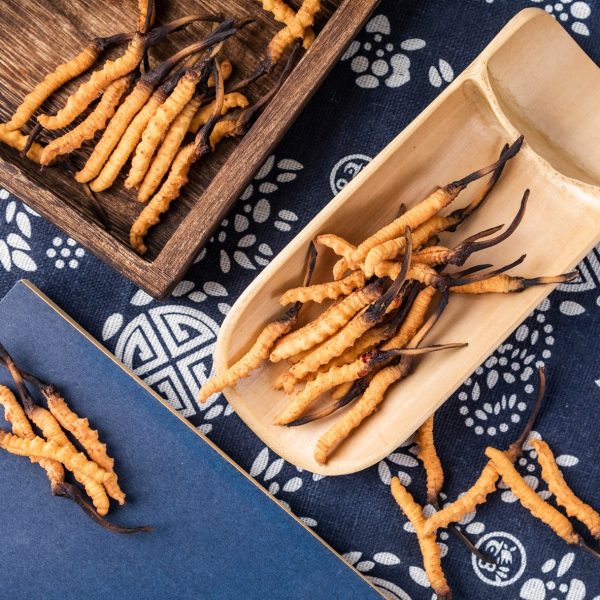-
How does it feel?
Feverfew is a powerfully aromatic plant. On tasting the tea of feverfew the initial sensory impact brings a rich profile of aromatic and bitter qualities.
-
What can I use it for?

Feverfew (Tanacetum parthenium) Feverfew is best used as antipyretic to support through a fever. It works by stimulating perspiration and movement of heat out through the skin. This helps to regulate the core body temperature whilst also encouraging the body’s natural defence mechanisms.
The overall objective of holistic fever support is to encourage the ‘breaking’ of a fever whilst supporting a healthy immune response that enables better detoxification of pathogens. Feverfew may be used in combination with herbs like elderflower and peppermint for this purpose.
Marketing pressures have resulted in the common use of feverfew for the prevention and treatment of migraines and headaches. Whilst feverfew may be very effective for the treatment of acute headaches and migraines, the use of herbs like feverfew for this purpose is very much limited to being a symptomatic approach and overlooks the more important focus — to identify the root cause and correct the physiological problems that lead to such symptoms.
Feverfew may be used intermittently to help with occasional headaches. However, ongoing, chronic or recurring headaches and migraines should first be investigated immediately by a medical professional to ensure there is no serious cause. In the situation where no serious cause has been identified, a clinical herbalist should be consulted. A herbalist seeks to support or encourage the body’s natural physiological processes with a view to creating a lasting resolution, rather than a short-term symptomatic intervention.
Feverfew has numerous other uses that include the treatment of painful menstruation, as well as toothache. It is also sometimes used topically as an anti-inflammatory and antimicrobial for insect bites.
-
Into the heart of feverfew

Feverfew plants (Tanacetum parthenium) Feverfew is an aromatic herb whose qualities are well allied with the grounding effect of its bitterness and acridity. Bitterness in a herb indicates a cooling effect in the body. This is because bitter compounds directly stimulate the function of the liver — a primary organ of elimination. Toxins in the blood are better eliminated when the eliminatory function is promoted.
Feverfew’s aromatic compounds combined with its bitter effects work directly to support digestive function. This enables better assimilation of digestive nutrients and helps to support a number of digestive complaints, such as nausea and indigestion.
Feverfew is an effective vasodilator, which may be applied to relieve constriction in the periphery. Migraines and headaches are often associated with tension in the micro-circulation, which can be caused by stress. Feverfew opens up the channels and allows better movement from the blood into the tissues by this opening effect in the cardiovascular system.
Feverfew can be combined with nervine herbs like oat straw, lemon balm or skullcap to ensure there is support in place for soothing and regenerating the nervous tissues.
-
Traditional uses

Feverfew in summer (Tanacetum parthenium) Feverfew was once commonly used in Europe to reduce fevers and chills, hence its common name ‘feverfew’ (Latin febrifugia). The first-century Greek physician Dioscorides prescribed feverfew for “all hot inflammations”.
Warm infusions were given to purge chole r and to treat the common cold, febrile diseases, bring on menstruation and expel worms. A decoction of feverfew (a strong tea) was given to ease a cough, wheezing and breathing difficulties.
In English folk medicine, feverfew was reportedly bound close to the skin, perhaps around the wrists for this purpose during the medieval period.
According to one story in Ancient Greece, feverfew was used to save the life of someone who had fallen from the Parthenon, the Doric temple dedicated to the goddess Athena, on the Acropolis in Athens. This is where feverfew gained its name parthenium.
It is also possible that the Greco-Roman practice of using feverfew for treating menstrual cramps in young women may have suggested the name parthenium, as “parthenos” means “virgin” in Greek.
Feverfew has a very long-standing tradition for use in the treatment of headaches, migraine headaches, rheumatoid arthritis, stomach aches, toothaches and insect bites in Greek and early European herbalists. The English Herbalist Gerard (1400s), for instance, says of it: “very good for them that are giddie in the head” and “for such as be melancholic, sad, pensive and without speech.”
-
Traditional actions
Herbal actions describe therapeutic changes that occur in the body in response to taking a herb. These actions are used to express how a herb physiologically influences cells, tissues, organs or systems. Clinical observations are traditionally what have defined these actions: an increase in urine output, diuretic; improved wound healing, vulnerary; or a reduction in fever, antipyretic. These descriptors too have become a means to group herbs by their effects on the body — herbs with a nervine action have become the nervines, herbs with a bitter action are the bitters. Recognising herbs as members of these groups provides a preliminary familiarity with their mechanisms from which to then develop an understanding of their affinities and nuance and discern their clinical significance.
-
Traditional energetic actions
Herbal energetics are the descriptions Herbalists have given to plants, mushrooms, lichens, foods, and some minerals based on the direct experience of how they taste, feel, and work in the body. All traditional health systems use these principles to explain how the environment we live in and absorb, impacts our health. Find out more about traditional energetic actions in our article “An introduction to herbal energetics“.
-
What practitioners say

Feverfew flowers (Tanacetum parthenium) Nervous system
Its feathery, aromatic leaves are used to prevent and treat migraines and headaches. A compound called parthenolide which is found in feverfew affects vascular smooth muscle in the brain. Parthenolide blocks the action of vasoconstrictors like serotonin, prostaglandins and norepinephrine in the brain (4). These are natural chemicals in the body that constrict the blood vessels which are thought to be responsible for triggering some types of migraine headaches.
There are a number of pharmacological findings relating to this mechanism of action. Parthenolide has also been shown to inhibit granular secretion aggregation and arachidonic acid mediated responses. Which likely works to help in pain conditions, again by means of vascular smooth muscle contractility inhibition (2, 3). It is likely that a number of compounds in feverfew work synergistically to create the combined effect of analgesia and inflammatory mediation.
Other nervous system symptoms that feverfew may be indicated for include dizziness, tinnitus (2), vertigo and Meniere’s disease, working by the same mechanisms as those described above (4). It combines with ginkgo and black cohosh for tinnitus and dizziness.
Musculoskeletal system
Inhibiting prostaglandins in the body produces analgesic, anti-inflammatory and antipyretic effects. It is likely this same mechanism that makes feverfew a useful pain-relieving herb in rheumatic conditions by reducing inflammatory processes in the body.
A herbalist may use feverfew to help during active flare-ups or in the most painful active stages of these conditions, rather than as an isolated approach. Holistic treatment of chronic inflammatory conditions such as arthritis most often involves a combined approach, which focuses on the systemic inflammation and immunological processes.
Skin
Feverfew is often referenced in herbalists’ texts as being specific for the treatment of psoriasis, an inflammatory skin condition that causes flaky patches of skin which form scales. This is most likely as a result of its powerful anti-inflammatory actions, whilst also improving the direct microcirculation to the skin (4).
Digestive system
Feverfew may be used in combination with other anthelmintic herbs as part of a treatment approach for intestinal worms and pinworms (5).
-
Research

Young feverfew plants (Tanacetum parthenium) Feverfew’s active compounds have been fairly well researched with some studies that demonstrate its mechanism of action and efficacy for a number of different applications including migraines, analgesia, febrifugal and even cancer. Some earlier studies suggest negative findings, however, it is important to note that these trials were based on an extract standardised for the concentration of parthenolides. It is these parthenolides that science has been most interested in, as they were thought of as feverfew’s ‘active constituent’. This, however, indicates that other active compounds found in the whole leaf extract may be important.
This is the common problem with certain modes of herbal research, such as those which use isolated or standardised extracts. The important synergy of multiple herbal compounds interacting together to create an effect is overlooked. For this reason, clinical trials in human subjects are the most relevant and reliable form of evidence. Most clinical trials are carried out using ‘whole plant’ extracts that better validate the effects of a full spectrum of active herbal compounds. Unfortunately, there is very little of this type of research into the uses of feverfew.
Migraines
A systematic review was carried out to evaluate the available data on the efficacy of feverfew in the treatment of migraine headaches. Six randomized, placebo-controlled, double-blind trials of feverfew for the prevention of migraine in human subjects were included. The review concluded that feverfew is likely to be effective in the treatment and prevention of migraines (7).
Medicinal actions
A systematic review was carried out to evaluate the available research on the use of feverfew for a number of its well-known medicinal applications. The review focused on a number of studies with isolated compounds from the flowers and leaves and also some clinical data. The review confirms that across the spectrum of data analysed, feverfew shows significant analgesic, anti-inflammatory and antipyretic activities (6).
Cancer
An in vitro study also found parthenolide to effectively inhibit hepatoma cell growth in a tumor cell-specific manner and trigger apoptosis of hepatoma cells. Prior to parthenolide-induced apoptotic cell death, depletion of glutathione, generation of reactive oxygen species, reduction of mitochondrial transmembrane potential, activation of caspases, and overexpression of GADD153 were observed, suggestive of parthenolide’s mechanistic underpinnings. Further clinical studies are needed to explore the safety and efficacy of parthenolide in humans.We strongly advise when treating cancer to work with an integrative specialist who can guide you on the safest steps to take. You can read more about this topic in our article “Mushrooms for cancer care“.
Additional information
-
Botanical description
Feverfew belongs to the daisy family. It is a daisy-like plant which is a short, bushy, aromatic perennial that grows to around 0.3–1 m in height. Its yellow-green leaves are usually less than 8 cm in length, almost hairless, and pinnate–bipinnate (these may be likened to the leaves of chrysanthemum).
Its yellow and white flowers bloom from July to October, are about 2 cm in diameter. They slightly resemble those of chamomile, for which they are sometimes confused. They have a yellow capitulum and a single layer of white outer-ray florets.
This aromatic plant gives off a strong and bitter odor. Its yellow-green leaves are alternate, and turn downward with short fine hairs. The small, daisy-like yellow flowers are arranged in a dense flat-topped cluster.
-
Common names
- Featherfew
- Featherfoil
- Febrifuge plant
- Mutterkraut (Ger)
- Camomille grande (Fr)
- Matrem (Dan)
-
Safety
Feverfew is unsafe for use during pregnancy due to its emmenagogue actions.
The fresh leaves may cause mouth ulceration in susceptible people.
-
Interactions
Although no drug interactions have been documented it is possible that feverfew may interact with aspirin and anticoagulant drugs due to its mechanism of action.
-
Contraindications
Feverfew should not be used by those who have a known sensitivity or allergy to plants in the daisy (Asteraceae) family.
-
Preparations
- Capsule
- Fresh herb
- Dried herb
- Freeze-dried herb
- Infusion
-
Dosage
Many users take the fresh leaf at a maximum dosage of 2g. Side effects are uncommon, however eating the fresh leaves has been known to cause ulcers in the mouth. A survey carried out in the 1980s showed that mild side effects of mouth ulceration and sore tongue occurred in 17.9% of 270 patients surveyed. It is said that freeze-dried leaves are less likely to cause this effect.
Fresh leaf tincture (1:1): Take up to 2ml in a little water twice daily.
Dried leaf tincture (1:5): Take between 1–2ml in a little water twice daily.
Fresh leaf: Take 2g of fresh leaf daily.
Dried leaf: Take up to 200mg of dried leaf daily.
-
Plant parts used
The leaf and flower of feverfew are used in herbal medicine. However, most texts refer to the use of the leaf.
-
Constituents
- Sesquiterpene lactones: Parthenolide (85%), eudesmanolides, germacranolides, and guaianolides. Parthenolide is a germacranolide
- Onoterpenes and sesquiterpenes (thujone; sabine; camphor; 1,8- cineole; umbellulone)
- Flavonoids (luteolin; quercetin; apigenin; diosmetin; jaceidin; jaceosidin)
- Volatile oils: Camphor (56.9%), camphene (12.7%), p-cymene (5.2%), and bornyl acetate (4.6%)(1, 2)

-
Habitat
Feverfew is native to Eurasia, specifically the Balkan Peninsula, Anatolia, and the Caucasus. It grows most commonly in glades, upland prairies, rocky open woods, forest openings, ledges and tops of bluffs, savannas, pastures, and roadsides.
-
Sustainability
Feverfew has not yet been assessed for the IUCN Red List of Threatened Plants database.
Habitat loss and over-harvesting from the wild are two of the biggest threats faced by medicinal plant species. There are an increasing number of well-known herbal medicines at risk of extinction. We must therefore ensure that we source our medicines with sustainability in mind.
The herb supplement industry is growing at a rapid rate and until recent years a vast majority of medicinal plant produce in global trade was of unknown origin. There are some very real and urgent issues surrounding sustainability in the herb industry. These include environmental factors that affect the medicinal viability of herbs, the safety of the habitats that they are taken from, as well as the welfare of workers in the trade.
The botanical supply chain efforts for improved visibility (transparency and traceability) into verifiably sustainable production sites around the world is now certificated through the emergence of credible international voluntary sustainability standards (VSS). Read our article on Sustainable sourcing of herbs to learn more about what to look for and questions to ask suppliers about sustainability.
-
Quality control
Herbal Medicines are often extremely safe to take, however it is important to buy herbal medicines from a reputed supplier. Sometimes herbs bought from unreputable sources are contaminated, adulterated or substituted with incorrect plant matter.
Some important markers for quality to look for would be to look for certified organic labelling, ensuring that the correct scientific/botanical name is used and that suppliers can provide information about the source of ingredients used in the product.
A supplier should be able to tell you where the herbs have come from. There is more space for contamination and adulteration when the supply chain is unknown.
-
How to grow
Feverfew is very easy to grow and makes for an attractive floral in pots or planted out into a raised bed or border. It prefers full sun in an area that receives a bit of light shade. Plant in well-drained sandy or loamy soil with a pH of 6.0 to 6.7.
- Start seeds indoors in containers in late winter, and set out seedlings in spring or sow seeds directly outdoors after the last frost.
- Barely covering them with a quarter of an inch of soil. You can plant in seeds or seedlings in rows a few inches apart.
- Thin out to around one foot apart once plants are a few inches tall. Keep the soil moist until germination.
- Plants should be watered a couple of times a week in the absence of rain to keep roots moist. It prefers to grow in slightly damp soil, so you should provide adequate water for the soil to remain moist, though not waterlogged.
- There is rarely a need to add fertiliser to feverfew as a plant that grows natively in the wild. Little maintenance is needed.
-
References
- Menzies-Trull, C. (2013). Herbal medicine keys to physiomedicalism including pharmacopoeia. Newcastle: Faculty Of Physiomedical Herbal Medicine (Fphm).
- Zhang, S., Ong, C.-N. and Shen, H.-M. (2004). Critical roles of intracellular thiols and calcium in parthenolide-induced apoptosis in human colorectal cancer cells. Cancer Letters, 208(2), pp.143–153. doi:https://doi.org/10.1016/j.canlet.2003.11.028.
- Wen J, You KR, Lee SY, Song CH, Kim DG. Oxidative stress-mediated apoptosis. The anticancer effect of the sesquiterpene lactone parthenolide. J Biol Chem. 2002;277(41):38954-38964. doi:10.1074/jbc.M203842200
- Pareek, A., Suthar, M., Rathore, G. and Bansal, V. (2011). Feverfew (Tanacetum parthenium L.): A systematic review. Pharmacognosy Reviews, [online] 5(9), p.103. doi:https://doi.org/10.4103/0973-7847.79105.
- Ernst, E. and Pittler, M. (2000). The efficacy and safety of feverfew (Tanacetum parthenium L.): an update of a systematic review. Public Health Nutrition, 3(4a), pp.509–514. doi:https://doi.org/10.1017/s1368980000000598.
- Pareek, A., Suthar, M., Rathore, G. and Bansal, V. (2011). Feverfew (Tanacetum parthenium L.): A systematic review. Pharmacognosy Reviews, [online] 5(9), p.103. doi:https://doi.org/10.4103/0973-7847.79105.
- Hoffmann, D. (2003). Medical herbalism – principles and practices. Inner Traditions Bear And Comp.
- Bone, K. and Mills, S. (2013). Principles and practice of Phytotherapy modern Herbal Medicine. 2nd ed. Edinburgh Churchill Livingstone, Elsevier.







































